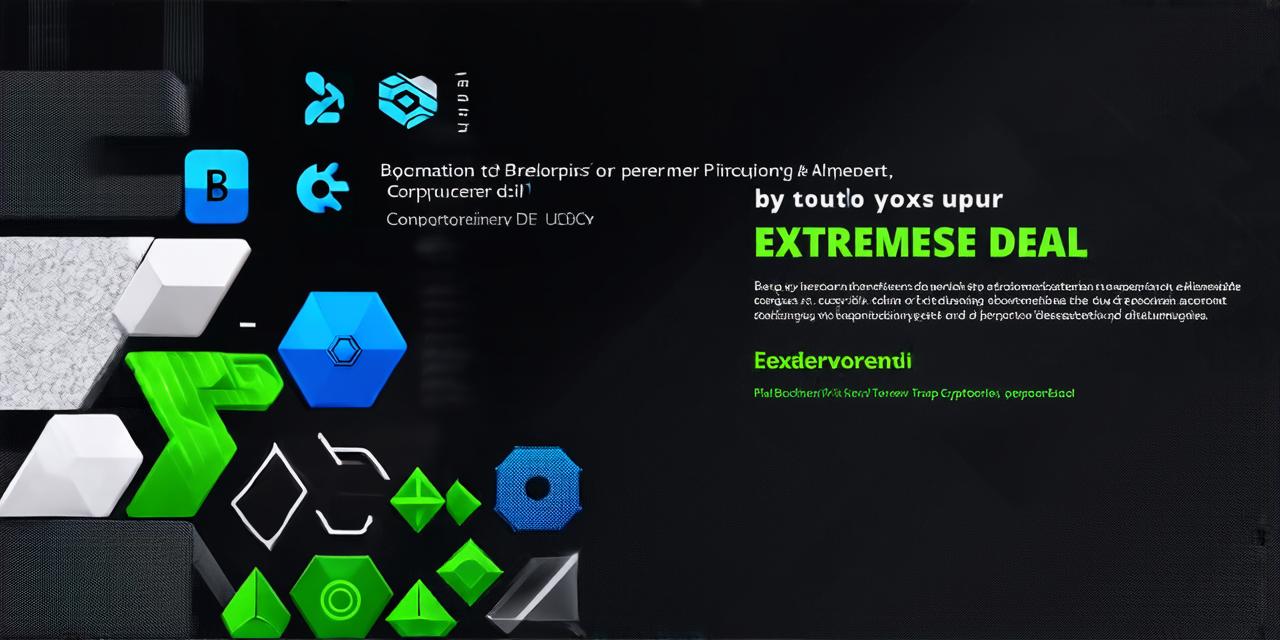What is a Blockchain App?
A blockchain app is an application that runs on the blockchain network, enabling users to interact with decentralized systems and applications. Blockchain apps can be used in various industries, such as finance, supply chain management, healthcare, and more. They are designed to provide secure and transparent transactions without intermediaries, making them ideal for scenarios where trust is a concern.
Advantages of Building a Blockchain App
Building a blockchain app has several advantages, including:
- Decentralization: Blockchain apps are decentralized, meaning they do not rely on intermediaries to function. This provides a level of security and transparency that is difficult to achieve with traditional systems.
- Immutable Data: The data stored in blockchain is immutable, meaning it cannot be altered or deleted once it has been recorded. This provides an additional layer of security and ensures that the integrity of the data is maintained.
- Smart Contracts: Blockchain apps can run smart contracts, which are self-executing contracts with the terms of the agreement between buyer and seller being directly written into lines of code. This eliminates intermediaries, reduces transaction costs, and increases efficiency.
- Lower Costs: Building a blockchain app can be more cost-effective than traditional systems, as it eliminates intermediaries and reduces transaction costs.
Challenges of Building a Blockchain App
Building a blockchain app also has its challenges, including:
- Complexity: The underlying technology behind blockchain is complex, making it difficult for developers to build apps that are easy to use and understand. This complexity can lead to longer development times and higher costs.
- Security: While blockchain technology provides security, it is not immune to attacks. Developers must take measures to protect their blockchain app from potential threats, such as hacking, phishing, and malware.
- Regulatory Compliance: The legal landscape surrounding blockchain technology is still evolving, and developers must ensure that their app complies with relevant regulations and laws. This can be challenging, especially in industries where there is little clarity on how to apply blockchain technology.
- Adoption: Building a blockchain app requires a level of adoption by users, which can be challenging to achieve in some industries. Users may be hesitant to use decentralized systems and applications, especially if they are not familiar with the technology.
Steps to Build a Blockchain App
Building a blockchain app requires several steps, including:
- Defining the Use Case: Before building a blockchain app, it is essential to define its use case and identify the requirements of the users. This will help developers determine which blockchain platform to choose and what programming languages to use.
- Choosing the Right Blockchain Platform: There are several blockchain platforms available, including Ethereum, Hyperledger, and Corda. Developers must choose the right platform based on the requirements of their app.
- Designing the App Architecture: Once the platform has been chosen, developers must design the architecture of their app. This includes deciding which programming languages to use and how to structure the app’s code. Developers may also need to consider how the app will integrate with other blockchain networks or APIs.
- Building the App: Developers can then begin building the app, following the architecture design. They may need to write smart contracts, test the app thoroughly, and deploy it on the chosen platform.
- Testing and Deployment: After the app has been built, it is essential to test it thoroughly to ensure that it works as intended. This includes testing for security vulnerabilities, functionality, and performance. Once the app has passed all tests, it can be deployed on the chosen platform.
- Maintenance and Upgrades: After the app has been deployed, it is important to maintain and upgrade it regularly to keep up with changing technologies and user needs. This includes adding new features, fixing bugs, and updating the app’s code as necessary.

Summary
Building a blockchain app can be challenging, but with the right approach and knowledge, it can be done successfully. Developers must define the use case, choose the right platform, design the architecture, build the app, test and deploy it, and continually maintain and upgrade it. By following these steps and drawing inspiration from successful real-life examples, developers can create blockchain apps that provide secure and transparent transactions without intermediaries. As the blockchain industry continues to grow and evolve, we can expect to see more innovative blockchain apps being developed and used in various industries.
